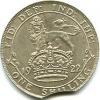How much literature do members have and use?
POLL - How many pieces of numismatic reference literature do you have?
34 members have voted
-
1. Number of books, catalogues, reports etc (approx)
-
00
-
1-5
-
6-10
-
11-20
-
21-50
-
51-100
-
101-250
-
251-500
-
501-10000
-
over 1000
-
-
2. Why do you keep literature or not?
-
Price information
-
General information on numismatics
-
Research
-
Light reading
-
Collect books
-
Don't keep any books0
-
- Due to no space
-
- Prefer to use the internet0
-
- Lack of funds or the cost of books
-
- Have insufficient interest in coins to justify buying books0
-
-
3. How do you see your future involvement with numismatic literature?
-
I will be buying more printed books
-
I will be using the internet almost exclusively
-
I will not buy any form of book, either virtual or real0
-
I will keep my existing references until worn out
-
My literature will expand in keeping with my collecting interests
-
I don't curently have any books, but will be getting some in the future0
-
...and if so, for prices?
-
...for detailed reference?
-
... for research?
-
...for general knowledge
-

Recommended Posts
Join the conversation
You can post now and register later. If you have an account, sign in now to post with your account.